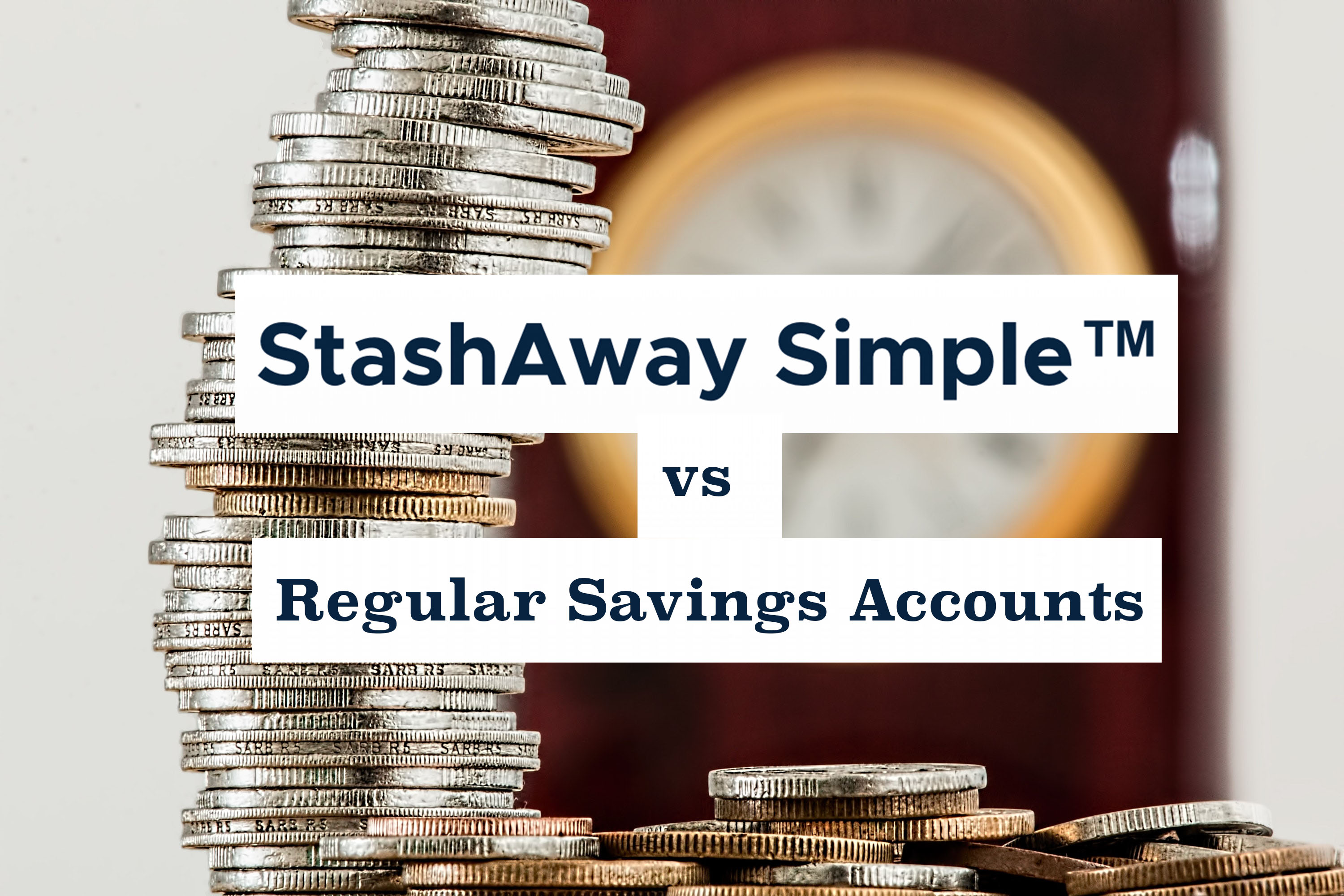Three causes there gained't be considered a 2021 housing industry crash

StashAway Simple Cash Management Account Vs Regular Savings Accounts – What are the differences?

StashAway's cash management portfolio – StashAway Simple – enables retail investors to invest in money market funds to beat the interest rate offered by banks on their cash savings. In providing this type of service, StashAway allows users to watch their cash holdings and investment portfolio, through the StashAway robo advisory tool, in a single convenient, consolidated platform.
From 1 September 2021, StashAway Simple has revised its projected net go back to 1.4% per annum on anywhere placed with them, without any lock-in periods or minimum balance. This really is higher than other no-frills, high-interest savings accounts and fixed deposits currently offered in Singapore.
Before this, StashAway Simple continued to pay for 1.9% on funds placed with it, despite the underlying investments not being able to achieve such returns, by providing an additional rebate.
Despite sharing several similarities with regular savings accounts from banks, there are several key differences between the two that are important to understand before signing up.
Read Also: Complete Help guide to Cash Management Accounts In Singapore
#1 StashAway Simple Is Not A Savings Account
The first point you'll know about StashAway Simple is that it is really a cash management account and never a savings account.
Unlike a checking account where your money is deposited with a bank, your deposits with StashAway Simple is allocated equally into two funds – Money Market Fund (MMF) which is made up of short-term money market instruments, that has been enhanced Liquidity Fund (ELF) which consist of debt instruments.
The combination of the funds makes StashAway Simple riskier than putting aside funds in a conventional banking account, although the risk is significantly less than typical growth-orientated investment portfolio.
StashAway Simple doesn't come with any sales charge or require any minimum balance. Furthermore, to enhance investor returns, any rebates from management fees are credited back to account holders in the form of projected net returns that is tied together with the returns of these two funds, less expenses.
On the other hand, you can't withdraw funds in StashAway Simple from an ATM, nor use it to pay your bills, issue a cheque based on funds from it, or any other functions you come to expect from your savings account.
#2 StashAway Simple's Projected Rate VS Savings Account's Tiered Interest Rates
As explained earlier, StashAway Simple aims to deliver a projected net return of 1.4% per annum. While the structure of the projected net return is flat and easy to understand, this rate is not guaranteed and could fluctuate according to economic conditions.
| Funds | LionGlobal SGD Money Market Fund | LionGlobalSGD Enhanced Liquidity Fund | Average Percentage |
| Weighted yield to maturity | 1.10% | 1.94% | 1.52% |
| Expenses | – 0.39% | – 0.43% | – 0.41% |
| Rebates from Fund Manager | + 0.125% | + 0.125% | + 0.125% |
| Projected Rate | 0.835% | 1.635% | 1.235% p.a. |
According to the latest factsheet and annual reports by the respective funds, and considering rebates from the fund manager, it appears as though the returns are lower than previously projected in September 2021. Given the trend of lowering rates of interest from other high yield savings account and our computed lower return for StashAway Simple, we might expect another round of interest rate cut from them. However, it isn't really immediate and may not materialise when the market conditions improve.
Interest rates of regular savings accounts offered by banks is typically lower, although banks may revise their rates of interest from time to time.
In the case of some high-interest savings accounts, there are tiered interest rates that require customers to satisfy multiple criteria, such as crediting of salary, transacting utilizing their credit cards and maintaining a monthly expenditure by means of insurance or investments. This higher interest might seem attractive but is only practical for those who can hit the criteria specified by the bank each month.
#3 The Use of SRS Funds in StashAway Simple
Another difference that sets StashAway Simple apart from the conventional savings account is the flexibility of channelling our Supplementary Retirement Scheme (SRS) monies into it.
SRS plays a complementary role to one's CPF savings, and can also be used as a tool to savor tax relief. However, an average SRS account with banks only offers an interest rate of 0.05% per year on SRS savings.
Due to the low-interest rates, our SRS savings risk becoming eroded by inflation over time. The usual choice of many SRS account holders will be to invest the monies. But for those who would prefer to place their SRS funds into instruments having a higher yield while limiting contact with high risk, StashAway Simple can be a wise decision.
Given the structure of StashAway Simple, it is obvious that there are some risks involved. For individuals who want risk-free investments to grow their funds, they can consider other relatively liquid products such as fixed deposits or the Singapore Savings Bonds, where the interest on deposits is guaranteed by the banks or government.
Investing With StashAway's Robo-Advisor Platform
If you intend to potentially earn more on your monies (by taking on slightly higher risk), you might want to look at StashAway's robo-advisor investment solution. For DollarsAndSense readers, StashAway is giving 50% off in management fees for six months, for up to $50,000 in portfolio value.
We will not be charged any management fee nor have any of our funds contribute to our AUM for the calculation of management fees for the StashAway Simple portfolio, and this exclusive offers are for its StashAway investment products.
Sign-up free of charge today at this link!





